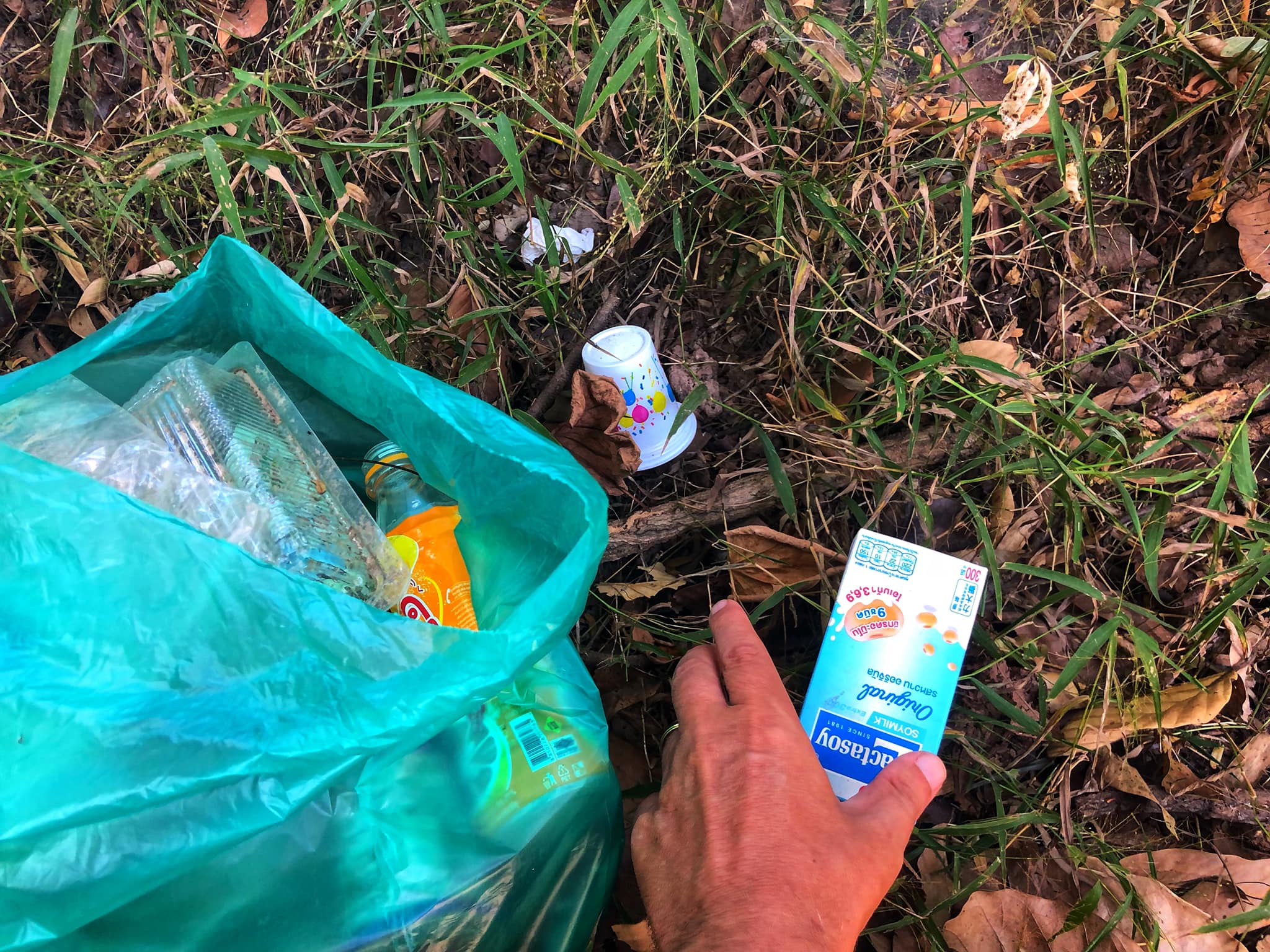Littering in Thailand: How to Solve the Problem

Anyone who has visited Thailand knows that the Kingdom has a littering problem. It’s not only Thais who are guilty of littering. Tourists are sometimes to blame — especially those who come from countries where littering is common, and strong social stigmas are absent.
Thailand has tried many familiar solutions to tackle the littering problem. There have been education campaigns by the government and non-profit organizations; increased anti-littering signage; and higher fines for littering (2,000 baht for on land, and 10,000 baht for on water).
However, none of these efforts have helped. Why? Some Thais have argued that littering continues because it’s a left-over habit from the days when everything was wrapped in banana leaves and decomposed on the ground. While that might have explained things 30 or 40 years ago, the argument doesn’t hold up any longer today.
The real reason is that studies show that increased education and signage don’t actually have that much impact in reducing littering. Meanwhile, fines for littering aren’t issued very often in Thailand, for the simple reason it’s hard to catch a litterer in the act.

The Solution to Thailand’s Littering Problem
This isn’t to say that education campaigns and anti-littering campaigns should be abandoned (for they do increase awareness of the issue), but only to recognize their limited impact if they aren’t combined with the most effective solution for reducing littering in Thailand: easy and immediate access to trash bins.
Thailand has an enormous shortage of trash bins (aka garbage cans), and the bins it does position around city centers, lakes and parks, beaches, food markets, parking garages, and other public spaces are often overflowing. In addition, when town fairs are held (especially upcountry), visitors often struggle to find a single trash bin anywhere on the grounds.
Easy trash bin access is essential for reducing littering in Thailand, because all people litter for the same reason: our brains are hardwired for convenience, of taking the short-cut, and littering is the easiest way of discarding the trash in our hand. Most people also have a herd mentality, so when littering starts, it becomes a self-perpetuating act, with people thinking it’s no big deal to add one more piece of trash to the ground.
According to one study in India, the optimal placement for trash bins is 50m, 75m, and 100m apart, depending on the population density and type of area. This placement sounds smart for Thailand’s city centers, parks, and tourist sites. Meanwhile, theme parks and beaches in Thailand might try to more closely match the Disney World model of 30 feet between trash bins.
The cost of buying these trash bins and managing their disposal would certainly be offset by the billions of baht saved in managing the waste and flood problems caused by massive littering. This includes blocked sewage systems, strangled canals, and polluted beaches (not to mention the health impact). Tourism would also increase, adding additional revenue.
Creating a New Anti-Littering Ad Campaign for Thailand
Thailand has some of the best TV ad creators in the world. Their funny and sometimes heart-wrenching Thai ads have won awards and gone viral on the internet (thanks to English subtitles).
However, Thailand’s TV ad directors and writers have yet to focus their energies on an anti-littering campaign that will reach Thais on a deeply emotional level — which is needed to change their attitudes and behavior toward littering.
The goal of a new ad campaign should be for Thais to look at littering the same way they now look at someone who is desecrating a temple, insulting a revered monk, or committing some other offense against an honored aspect of Thai culture. This requires a deeply emotional appeal.
For inspiration to get started, Thai TV ad creators could look towards the now iconic “Crying Indian” anti-littering ad produced by the Make America Beautiful campaign in the 1970s, when the United States had a bad littering problem.
Lasting about a minute, the ad begins with a tranquil scene of nature, featuring a river or waterway, accompanied by Native American-inspired flute music.
In the opening sequence, a Native American man, portrayed by Iron Eyes Cody, is seen paddling a canoe along the water. Dressed in traditional Native American attire, he exudes a connection to nature and the environment.
Upon reaching the shore, the man witnesses a passing car callously throwing a bag of fast-food trash out of the window. The bag bursts open, scattering litter—plastic, paper, and other debris—onto the landscape.
The camera zooms in on the Native American man’s face, revealing a single tear rolling down his cheek. This tear symbolizes the emotional impact of witnessing environmental degradation and pollution.
A voice-over then begins, delivering a powerful message: “Some people have a deep, abiding respect for the natural beauty that was once this country. And some people don’t. People start pollution. People can stop it.”
There are many ways the general theme of this famous ad could be reworked for the Thai context — taking into consideration the unique aspects of Thai culture. Such a powerful anti-littering ad campaign, combined with 250k strategically placed trash bins, could finally cure the littering problem that has plagued Thailand for so long.
- Affirmations in Buddhism & Thailand - June 7, 2025
- Speak Thai Naturally Without the Gymnastics - April 20, 2025
- The Best Learn Thai Podcast and YouTube Channel - April 10, 2025




